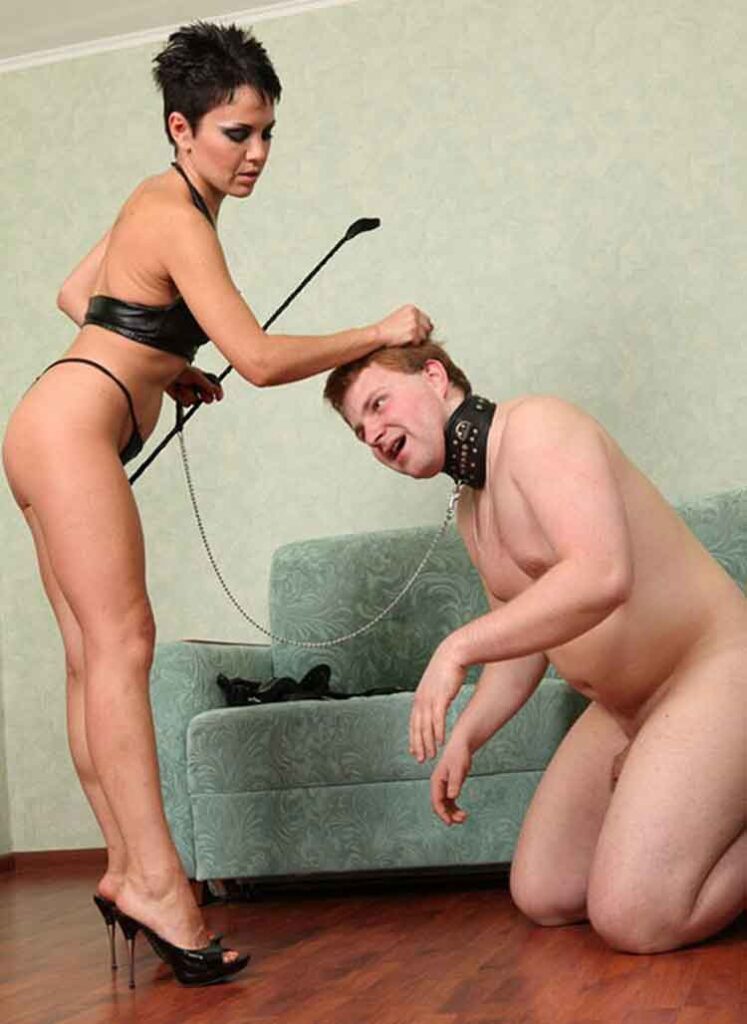If you’re exploring the idea of a Female Led Relationship (FLR), you might be wondering how to create a relationship dynamic that feels structured, consistent, and accountable.
This is the ideal, the female dominant has ‘trained’ their submissive and put structure to the power dynamic.
One way to establish this kind of dynamic is through discipline training – a process where you and your partner set rules and expectations for behavior, and then reinforce those rules with consequences if they’re not followed.
But how do you go about discipline training, and what kind of consequences should you use? And is discipline training really necessary in an FLR?
In this article, we’ll walk you through everything you need to know about discipline training in an FLR, from establishing clear rules to choosing the right consequences.
We’ll explore different types of discipline, discuss whether discipline training is right for you and your partner, and provide practical tips for building trust and respect within your relationship.
Whether you’re a new dominant looking to establish discipline in your FLR, or a submissive trying to understand the role of discipline in your dynamic, this guide has got you covered.

Table of Contents
What Is Discipline Training
At its core, discipline training is about establishing expectations and rules for behavior in an FLR.
The goal is to create structure, consistency, and accountability within the relationship so that both partners feel supported and on the same page.
Essentially it’s about the mistress setting behavioral rules for the submissive and holding them accountable to those rules.
When you engage in discipline training, you’ll work together to set rules that cover a range of behaviors, from the small stuff (like household chores or daily routines) to more serious issues (like lying or breaking promises).
The key is to make sure that the rules are clear, reasonable, and agreed upon by both partners.
If a rule is broken, there will be consequences.
These consequences might be mild, like a verbal reminder, or more severe, like loss of privileges or physical punishment.
The severity of the consequence should be appropriate to the infraction, and both partners should be involved in deciding what consequences are appropriate.
It’s important to note that discipline training is not about controlling or dominating the submissive partner.
It should always be consensual, with both partners working together to establish the rules and consequences.
The goal is to create a sense of structure and accountability that benefits both partners, and strengthens the relationship as a whole.
This is achieved by setting rules, training the submissive in expected behaviors and appropriate comportment, and establishing punishments to keep the submissive knowing whats expected of him.

Types of Discipline Training in an FLR
In an FLR, discipline training can take many forms, and the dominant partner has a range of tools at their disposal to establish structure and accountability.
Here are some of the most common types of discipline training used in FLRs:
Positive reinforcement is all about rewarding good behavior, instead of punishing bad behavior. This might involve giving praise or a small gift to the submissive partner when they do something well, as a way to encourage them to keep up the good work.
Verbal reminders are another form of discipline that can be used to reinforce behavior.
In this case, the dominant partner simply reminds the submissive of the rules and expectations, without resorting to more severe forms of punishment.
Writing assignments can be a helpful way to get the submissive partner to reflect on their behavior and take responsibility for it. This can be a powerful form of discipline that encourages self-awareness and growth.
Restriction of privileges is a more severe form of discipline that involves taking away something the submissive partner enjoys, such as access to the internet or a favorite hobby. This type of discipline can be especially effective for more serious infractions.
Finally, physical punishment is a last resort in discipline training. It can include things like spanking or flogging, but it should always be consensual and agreed upon by both partners. Physical punishment should never be used to exert control or dominance over the submissive partner.
It’s important to note that discipline is not the same as punishment.
Discipline is all about establishing structure and consistency in the relationship, while punishment is a consequence for breaking the rules. While punishment can be a part of discipline training, it should never be the only focus.
For example, if a submissive forgets to do a chore, they can be punished which could involve a caning if it’s an agreed punishment for the ‘crime’ but if the submissive keeps arguing with the mistress they can receive a similar caning but the process is discipline.
The caning could be accompanied by the submissive saying “I will never overspeak mistress again” with each whip of the cane. That’s discipline training consequences in action.
The goal of discipline training should always be to create a healthy and supportive FLR dynamic that benefits both partners.

Is Discipline Training Required in an FLR
Discipline training isn’t always a must-have for every FLR.
Sometimes, submissives might naturally adopt the desired behaviors without explicit training.
But, it’s still crucial to establish clear rules and expectations for the submissive partner to follow, even if punishment isn’t necessary.
Instead of solely relying on punishment, discipline can also be reinforced through positive reinforcement like praise or rewards, which can be a powerful motivator for the submissive to continue their good behavior.
However, most FLRs will create a set of standard rules and expectations for the submissive to follow.
At times, the submissive might fail to meet these expectations, and in those situations, the dominant partner will need to enforce discipline to correct their behavior.
Punishment may not always be required, but it’s important for the dominant partner to be consistent and follow through with consequences when necessary.
Structure and firmness supplied by the dominant gives the submissive a sense of order and expectation.

Establishing The Rules for the Submissive
Setting clear rules is an important part of any female-led relationship.
The rules should be constructed with respect for the mistress and should establish the authority and submissive position of the partner.
The rules should be useful for the mistress and reflect her desires for how the household and relationship should be run.
They should also be agreed upon by both partners and be easy to understand.
Common rules in a female-led relationship include rules related to household chores and the submissive’s behavior, such as maintaining a respectful attitude and seeking permission before making certain decisions.
The female dominant might want the submissive to stop drinking sugary drinks for example and establish a rule about asking permission before buying or drinking soda.
Also the rule should sthink about how it might be clevely avoided, submissives can be wily.
Saying ‘ask permission before buying a sugary drink’ might mean that the submissive could get someone else to buy them and then drink them, all without breaking the rule.
Avoiding the intent, but following the rule.
These rules should be established through open communication and feedback between both partners.
It’s important for the dominant partner to communicate their expectations clearly and provide feedback as needed. The submissive partner should also have the opportunity to voice their concerns and provide feedback on the rules.
Here’s a bulleted list of common rules in a female-led relationship that focus on behavior:
- Maintain a respectful and courteous attitude towards the dominant partner at all times
- Listen and communicate effectively with the dominant partner
- Avoid interrupting or speaking over the dominant partner
- Practice good hygiene and personal grooming habits
- Show physical and emotional affection towards the dominant partner
- Refrain from engaging in certain activities or behaviors without permission, such as smoking, drinking alcohol, or using social media
- Be punctual and responsible with completing tasks and obligations
- Attend to the dominant partner’s needs and desires
- Show appreciation and gratitude towards the dominant partner for their leadership and guidance regularly
Again, please keep in mind that the rules given by a female dominant may vary depending on their specific desires and expectations for the relationship.
Ultimately, the rules should create a positive and healthy dynamic between both partners and help reinforce the submissive’s position in the relationship.
By setting clear expectations, both partners can feel more secure in their roles, and the relationship can flourish.

7 Things to Know About Discipline Training
If you’re considering incorporating discipline and punishment into your power exchange dynamic, there are some important things to keep in mind.
Firstly, it’s crucial to avoid punishing your submissive in anger.
If you’re feeling particularly upset or angry, take the time you need to calm down before issuing any consequences. When emotions are high, it’s easy to say or do things you’ll regret later.
Punishment should be done with an explanation for why the submissive is being punished, they must understand the reason.
It’s also important to note that punishment should be a mutual agreement between you and your submissive.
If it has never been discussed before, don’t start issuing punishments when something goes wrong.
Instead, take it as a learning opportunity and discuss what can be done differently next time.

However, if your submissive requests a punishment because they feel guilty, you may want to reconsider. As a Dominant, it’s important to avoid giving out punishments on a whim until it has been properly consented to.
Sometimes, a simple phrase like “I’m very disappointed in you, you have disrespected me” can be more effective than any physical punishment.
As a submissive, the last thing they want to do is disappoint the dominant. It’s a deeply painful experience that can be a powerful motivator to correct my behavior.
However, it’s important to remember that discipline and punishment shouldn’t come at the expense of your mental health. If punishment is causing undue stress or anxiety for either of you, it’s okay to drop it or re-evaluate the situation.
After any punishment has been carried out, it’s important to talk through what happened in a calm and respectful manner. Discuss the incident and the consequences, and make a plan for how to avoid similar issues in the future.
Finally, it’s crucial to let go of any anger or guilt once the punishment is over. Holding onto negative feelings can erode trust and lead to further issues down the line.
If you find it difficult to move past the situation, keep discussing it until you’ve both come to a resolution.
Remember that while some behaviors may warrant a consequence, bigger issues like lying or cheating require a deeper conversation to address the root of the problem.
Additionally, if a submissive asserts their own boundaries or withdraws consent, this is not something that should be punished. Respecting your submissive’s autonomy and agency is a fundamental aspect of any healthy power exchange dynamic.

How to Start Discipline Training
Starting discipline training can feel overwhelming, but breaking it down into manageable steps can make it easier to navigate.
As a female dominant, here are some practical steps you can take to begin:
- Start with a conversation: Before implementing any form of discipline, have an open and honest discussion with your submissive about what they’re comfortable with, what their boundaries are, and what they hope to gain from the experience. Listen to their concerns and make sure you’re both on the same page.
- Make a list: Start a notebook with points about the behavior you want to see from the submissive and actions he should take. Do research, and incorporate what you want to see. Update this list as you go. Think about your preferences and how the submissive can fulfill them.
- Start small: Don’t jump into the deep end right away. Begin with small rules that are easy to follow and enforce. For example, you could start by requiring your submissive to ask for permission before they drink soda or implementing a bedtime routine. Make some rules about respect and attitude towards your authority.
- Be consistent: Once you’ve established rules, it’s important to be consistent in enforcing them. This will help your submissive understand what’s expected of them and create a sense of structure and routine in the relationship.
- Use positive reinforcement: Discipline doesn’t always have to be negative. Use positive reinforcement to reward good behavior and encourage your submissive to continue making progress. Praise, small rewards, and positive feedback can go a long way in motivating your submissive.
- Evaluate and adjust: As you and your submissive navigate discipline training, it’s important to evaluate what’s working and what’s not. Adjust your approach as needed and make sure to check in regularly with your submissive to ensure they’re comfortable and happy with the process.
Remember, you are both learning, you may require that the submissive address you as mistress if he is asking you something. he may forget, forgive the first few slip ups but then address it.
“You need to improve in your addressing of me, you have slipped in regard to this a few times, from tomorrow I will issue corrective procedures to help you remember”.
Starting discipline training in a new relationship can be a learning process for both you and your submissive.
Take it slow, communicate openly, and be patient as you both explore this new dynamic together.
Eventually, a set of rules will be established and enforced that are satisfactory to you both.

Accountability and Punishment with Discipline Training
Accountability and punishment are integral parts of discipline training.
The submissive must be held accountable to what’s expected of him, otherwise, they are just suggestions.
The ultimate goal of discipline training is to establish a dynamic where the submissive is given rules to operate by, allowing them to meet the Mistress’s desires without constant monitoring.
This requires that the submissive knows the rules, so they know when they are transgressing them.
If they are found to be transgressing, discipline can be performed to correct the behavior, or punishment can be given for deliberate violations.
Over time, the submissive will learn what is expected of them, know the rules, know when they break them, and understand what happens if they do.
Accountability and punishment are essential to this process.
By holding the submissive accountable for their actions and enforcing consequences for their behavior, the Mistress establishes a clear system of rewards and punishments that encourages the submissive to comply with their desires and expectations.
It’s important to note that punishment should always be proportional to the transgression.
Harsh or excessive punishment can be detrimental to the submissive’s mental and emotional well-being, which goes against the purpose of discipline training.
The submissive should always feel safe and supported, even when they have made a mistake or broken a rule.
By balancing accountability with compassion and understanding, the Mistress can create a discipline training dynamic that benefits both herself and the submissive.

Conclusion
Discipline training can be an effective way for a female dominant to establish and maintain a power exchange dynamic with her submissive partner.
It involves setting clear rules and expectations, and implementing consequences for violations.
It is important to remember that discipline should always be done in a safe, consensual, and respectful manner, and that communication is key throughout the process.
Starting small and building gradually is a good approach, as is taking the time to discuss and agree upon rules and consequences.
The ultimate goal is to create a dynamic where the submissive is able to operate within the Mistress’s desires without constant monitoring, as he knows the rules, knows when he breaks them, and knows what happens if he does.
With patience, commitment, and open communication, discipline training can be a valuable tool for building a strong and fulfilling power exchange relationship between a female dominant and her submissive partner.
Trying to talk to your partner about the benefits of a female led relationship can be hard. Use this open letter to help or to prompt constructive dialogue.


james
very helpful site
Richard1201
Hi ! How does discipline training differ between various types of relationships, and what underlying psychological principles make it effective? Are there specific techniques or methods that can enhance its impact, and how can one ensure that both partners feel empowered rather than constrained within this dynamic?
SubHub
Love and trust are the foundation of any relationship, including an FLR. My wife spanks me because she loves me enough to give me what I sometimes need and I trust her judgment about what I need, She trusts me to give an honest accounting of my behavior every week and I love her enough to really examine my behavior to see what I did or didn’t do and what things could have been done better. One of the cornerstones of our FLR is a weekly ritual where I strip to my chastity cage and kneel before her with my hands behind my back and look directly at her. We have an honest conversation about me conduct the prior week. Once we have assessed my conduct, it’s up and over her knee, but that conversation and it’s context are even more important than the paddling.
Richard1201
Hi!) What unconventional methods have you found effective in discipline training within a Female Led Relationship? Are there any unique rituals or practices that challenge traditional norms while fostering connection and accountability?
Richard1201
Hello!! What happens when the absence of discipline leads to a power struggle rather than harmony? Can the lack of structured training create tension, or does it open the door for a more organic dynamic to flourish?
Richard1201
Hello!) Could the absence of discipline training in a Female Led Relationship actually undermine the dynamic, or can a relationship thrive on trust and communication alone? What are the potential consequences of skipping formal discipline in favor of a more relaxed approach?
SubHub
Discipline is the foundation of an FLR. It’s easy to obey a rule or an order you want to obey, or at least don’t mind. Discipline is what motivates you to obey when you don’t want to. Also the act of submission to it binds the partners together. When my wife has me over her knee we are not only physically connected in a very intimate way, but also very emotionally connected. I trust her to mete out the right of amount of punishment and she knows I will accept her judgment about what is needed.
Richard1201
What unconventional methods of discipline training have you found to be effective in a Female Led Relationship? Are there any surprising approaches that challenge traditional views on discipline and submission, and how do they impact the dynamics of power exchange?
Richard1201
What if discipline training is less about rules and more about exploring the deeper psychological aspects of power dynamics? Can an FLR thrive without stringent discipline, or does that lead to chaos? How do you balance freedom and structure in such relationships?
Russell
A female led relationship can take many forms. But there has to be consequences otherwise it won’t work. The most common method of discipline is spanking but there are others like
Line writing
Early bed times
Removal of phone and other devices
Restrictions on TV watching
Going into a chastity cage for a period of time
Removal of toilet rights so a nappy has to be worn which is immensely embarrassing
The list goes on but these are some that my partner Claire uses
SubHub
Claire sounds delightfully strict and devilishly creative! In addition to spanking I get corner time and scolding (sometimes with a slap in the face) and I have had my mouth soaped. We are both very lucky guys.
Suman
Thanks for your good works in flr relationship and the importance of obedience by the submissive with out question. But I have a doubt,if the submissive is very obedient and be ready to rectify in mistakes,then saviour punishment is necessary. Or is it a custom to punish him occasionally.
Thanks for your exciting work